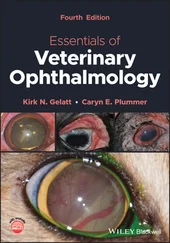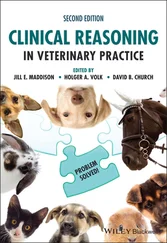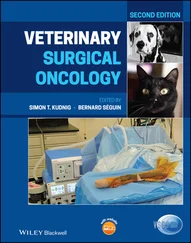Clive Elwood - Leadership in Veterinary Medicine
Здесь есть возможность читать онлайн «Clive Elwood - Leadership in Veterinary Medicine» — ознакомительный отрывок электронной книги совершенно бесплатно, а после прочтения отрывка купить полную версию. В некоторых случаях можно слушать аудио, скачать через торрент в формате fb2 и присутствует краткое содержание. Жанр: unrecognised, на английском языке. Описание произведения, (предисловие) а так же отзывы посетителей доступны на портале библиотеки ЛибКат.
- Название:Leadership in Veterinary Medicine
- Автор:
- Жанр:
- Год:неизвестен
- ISBN:нет данных
- Рейтинг книги:4 / 5. Голосов: 1
-
Избранное:Добавить в избранное
- Отзывы:
-
Ваша оценка:
- 80
- 1
- 2
- 3
- 4
- 5
Leadership in Veterinary Medicine: краткое содержание, описание и аннотация
Предлагаем к чтению аннотацию, описание, краткое содержание или предисловие (зависит от того, что написал сам автор книги «Leadership in Veterinary Medicine»). Если вы не нашли необходимую информацию о книге — напишите в комментариях, мы постараемся отыскать её.
Leadership in Veterinary Medicine
Leadership in Veterinary Medicine
Leadership in Veterinary Medicine — читать онлайн ознакомительный отрывок
Ниже представлен текст книги, разбитый по страницам. Система сохранения места последней прочитанной страницы, позволяет с удобством читать онлайн бесплатно книгу «Leadership in Veterinary Medicine», без необходимости каждый раз заново искать на чём Вы остановились. Поставьте закладку, и сможете в любой момент перейти на страницу, на которой закончили чтение.
Интервал:
Закладка:
The RCVS Codes of Professional Conduct for Veterinary Surgeons and Veterinary Nurses puts ‘meat on the bones’ of professional responsibilities and, with supportive guidance, outlines what is expected of professionals. Furthermore, on admission to the veterinary register we declare that ‘ ABOVE ALL, my constant endeavour will be to ensure the health and welfare of animals committed to my care.’
2.6 Uncertainties of Role and Identity
If you were to ask a cross‐section of the general public what the veterinary professions are ‘for’ you might expect a range of responses such as ‘looking after sick animals’, ‘vaccinating and neutering’, ‘diagnosing and treating disease in animals’. For veterinary professionals, the answers might be broader, more specific, more nuanced, and not, in every case, aligned with the view of the profession from wider society. I doubt, for example, that many non‐veterinary professionals would raise ‘protection of the food chain’, ‘farm animal productivity’, ‘racehorse performance’, ‘medical research’, ‘drug development’, or the many other areas in which veterinary professionals practise.
And this is where we run into paradox, contradiction, complexity, and ambiguity. Who, truly, do the veterinary professions serve? Our professional status gives us the right to cause harm to animals (‘acts of veterinary surgery’), which is modified (and contradicted) by the primacy of animal welfare as per the oath. We also have the right to charge a fee for our services and, thereby, serve our own needs. Yet, are we, truly, outside of society? Of course not. As the professions' response to global threats show, human welfare (of both colleagues and society) takes precedent, above the declaration that we serve animal welfare ‘ABOVE ALL’. The profession serves the animals in its care, yes, but it does so with implicit (the social contract) and explicit, legal, permission of human society. Many people are not interested in really understanding the role of the veterinary professional; they are just grateful someone is there to take on the responsibilities on their behalf.
If caring organisations are developed to provide defences against anxieties on behalf of human society, then this raises interesting questions about what the veterinary professions are really ‘for’ at an unconscious level (Armstrong and Rustin 2014). The veterinary professions, generally accepted to be ‘caring’, take on a part of the management of the human‐animal interface on behalf of society at large, and function as a place to hold and contain the associated anxieties. This human–animal interface is itself a place of contradiction, paradox, and pain where the idealism of animals as joint rightful sharers of the space on this earth does not (for most of us) bear critical examination, and where the joys of animal companionship come with, emphasise, and maybe help us to face, the inevitability of human pain, ageing, and death (cheery, huh?). So, even at a basic level, to be a veterinary professional is to wrestle and manage with uncertainties of role and identity. These conflicts and paradoxes may be conscious or unconscious; perhaps this is the water in which we swim?
2.7 Professional Archetypes
How does this perspective help understand the veterinary professions? Following the logic of Hafferty and Castellani (2010), who examine the medical professions from a systems perspective, the unconscious and contradictory forces that are at play, and the resultant types of professional(ism), the veterinary professions might readily be viewed as existing within a complex open system. Hafferty and Castellani (2010) identified 10 key aspects of human medical work (altruism, autonomy, commercialism, personal morality, interpersonal competence, lifestyle, professional dominance, social justice, social contract, and technical competence) and then arranged these within different clusters to identify seven types of professionalism. The authors emphasise that these key aspects of medical work and types of professionalism are not the only ones worth examining and, extrapolating from studies of veterinary professional identity I have added a ‘relational’ archetype (Armitage‐Chan and May 2018; Hamilton 2018). The resultant role complexity is too great for any individual to hold and suggests it is right that we should respect similar diversity of purpose, values, and primary task in the veterinary professions ( Table 2.1). A failure to examine, understand, and accept this might underlie some of the dynamic tensions that repeatedly play out as a result of inevitable conflict between differing, yet equally valid, professional stances.
 This might all seem a bit ‘unnecessary’ and ‘wishy‐washy’ (‘Just tell me how to lead’, I hear you cry), but it is important to consider the deeper systemic and unconscious forces that might be at play. Understanding drivers of the diverse behaviours, values, and attitudes around us can help with leading effectively and understanding why it can be so difficult at times.
This might all seem a bit ‘unnecessary’ and ‘wishy‐washy’ (‘Just tell me how to lead’, I hear you cry), but it is important to consider the deeper systemic and unconscious forces that might be at play. Understanding drivers of the diverse behaviours, values, and attitudes around us can help with leading effectively and understanding why it can be so difficult at times.
2.8 Why Is Leadership Important in the Veterinary Professions?
Occupation of formal leadership roles in the veterinary professions has changed as the veterinary professions themselves have changed. What used to be the domain of older, mostly white, mostly male leaders at local, national, and global levels is changing. The increasingly female intake to veterinary schools, changes to practice ownership structures, sale of practices to consolidating organisations, the influence of ‘big business’ on the practice of veterinary clinical medicine, the retirement of practice owners who have had no incentive to develop their successors, a high dropout rate of veterinary professionals in the early years of their career, a low return‐to‐work rate and increasing reliance on self‐employed professionals with portfolio careers have all lead to a leadership crisis and, in clinical practice at least, a vacuum at the top and middle layers of practices. This in turn has, I believe, contributed to the vicious cycle whereby an absence of effective leadership and support has contributed to burn‐out, lack of confidence, motivation and ambition, and cynicism regarding leadership itself.
Recent years have shown a changing relationship with leaders and leadership in our wider societies too. In the 1990s and early 2000s there have been recurrent failures of top business and political leaders, regular economic, moral, and political scandals, financial failures on a global scale and an inability to face world‐threatening issues such as climate change. Alongside this, the massive changes in social structures, networks, and communication systems have made it much more challenging to control the message (although some have tried, and managed, depressingly effectively) and allowed some bad leadership to be exposed. Unfortunately, this has also undermined the importance of, and benefit from, good‐enough leadership, which is often forgotten, overlooked, or taken for granted.
Table 2.1 Eight possible archetypes of veterinary professionalism and their associated personal narratives.
Source: Adapted from Hafferty and Castellani (2010).
| Professional Archetype | Narrative |
|---|---|
| Nostalgic | I exemplify the profession ‘as it used to be’. I set high standards of competence and will always go the extra distance for clients and patients. |
| Entrepreneurial | I am proud of delivering competent work and comfortable charging the client for good work, well done. Business growth is good for all. |
| Academic | I am driven by curiosity, motivated by the freedom to explore better ways of practicing and I enjoy sharing ideas and knowledge. |
| Lifestyle | I won't subsume my personal life for my professional life. I am willing to work hard but expect boundaries to be defined and maintained. I expect fair reward. |
| Empirical | I will use my knowledge and the evidence to deliver the best professional work I can in the service of their patients. |
| Unreflective | It works for me, and for my patients, so why do I need to change? And my clients think I am great. |
| Activist | The world is broken, and I need to fix it. I serve the greater good. I don't care about money or personal rewards. |
| Relational | The world is complex and ‘wicked’. I co‐create solutions with other stakeholders to promote good outcomes for my patients and custodians. |
2.9 Veterinary Teams
Интервал:
Закладка:
Похожие книги на «Leadership in Veterinary Medicine»
Представляем Вашему вниманию похожие книги на «Leadership in Veterinary Medicine» списком для выбора. Мы отобрали схожую по названию и смыслу литературу в надежде предоставить читателям больше вариантов отыскать новые, интересные, ещё непрочитанные произведения.
Обсуждение, отзывы о книге «Leadership in Veterinary Medicine» и просто собственные мнения читателей. Оставьте ваши комментарии, напишите, что Вы думаете о произведении, его смысле или главных героях. Укажите что конкретно понравилось, а что нет, и почему Вы так считаете.












